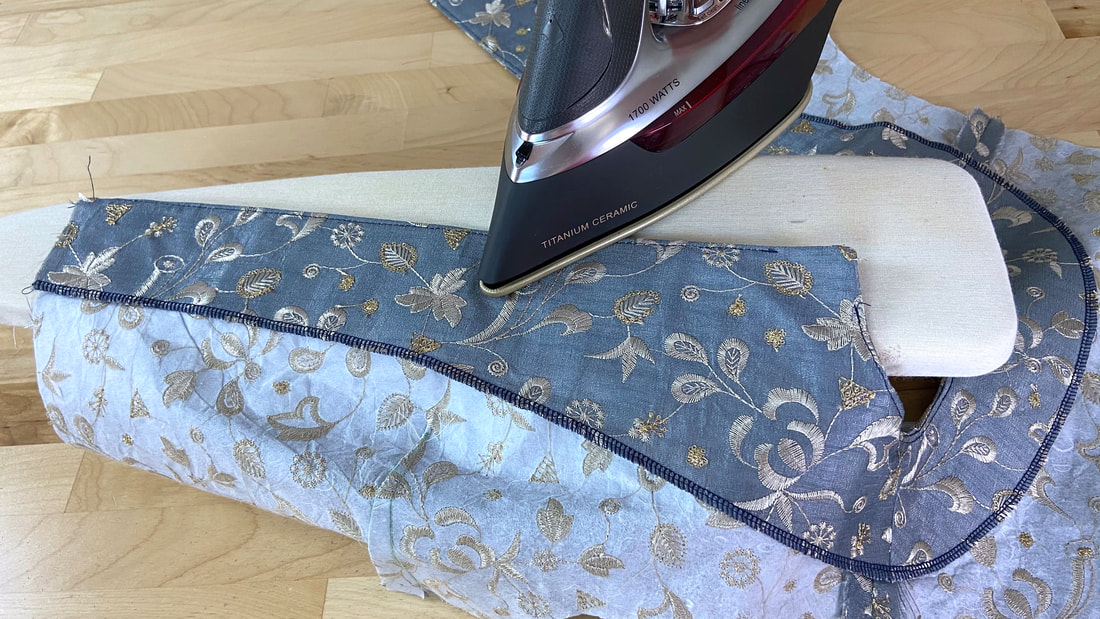What Is A Regular Neck-Front Combination Facing In Dressmaking
A neck-front combination facing is used to clean finish the garment's opening and neckline edges simultaneously. In a conventional application, the facing compartment is stitched separately then attached to the garment's front opening and the neckline respectively. If you take a closer look at the garment opening edge, you should see a clearly defined seam corresponding to this edge.
A conventional neck-front combination facing features two front pieces and a back neck piece. The front facing clean finishes both the garment opening and front neckline edge while the back piece is only used to clean-finish the back neckline.
To form the facing compartment, the front and back pieces are connected at the shoulder seams. This is done prior to attaching the facing to the garment opening.
Once both garment and facing shoulder seams are stitched and ironed flat, the facing compartment is placed on top of the garment with face sides touching and all edges aligning. These edges are then stitched at the designated seam allowance to permanently attach the combination facing.
Note: Before turning the facing compartment to the wrong side of the garment, the seam allowance layers are trimmed and notched along the curved neckline edge and at each top opening corner to eliminate tension and excess bulk.
After the facing has been understitched and flipped to the garment's wrong side in its natural position, all finished edges are ironed flat for a smooth, professional finish.






